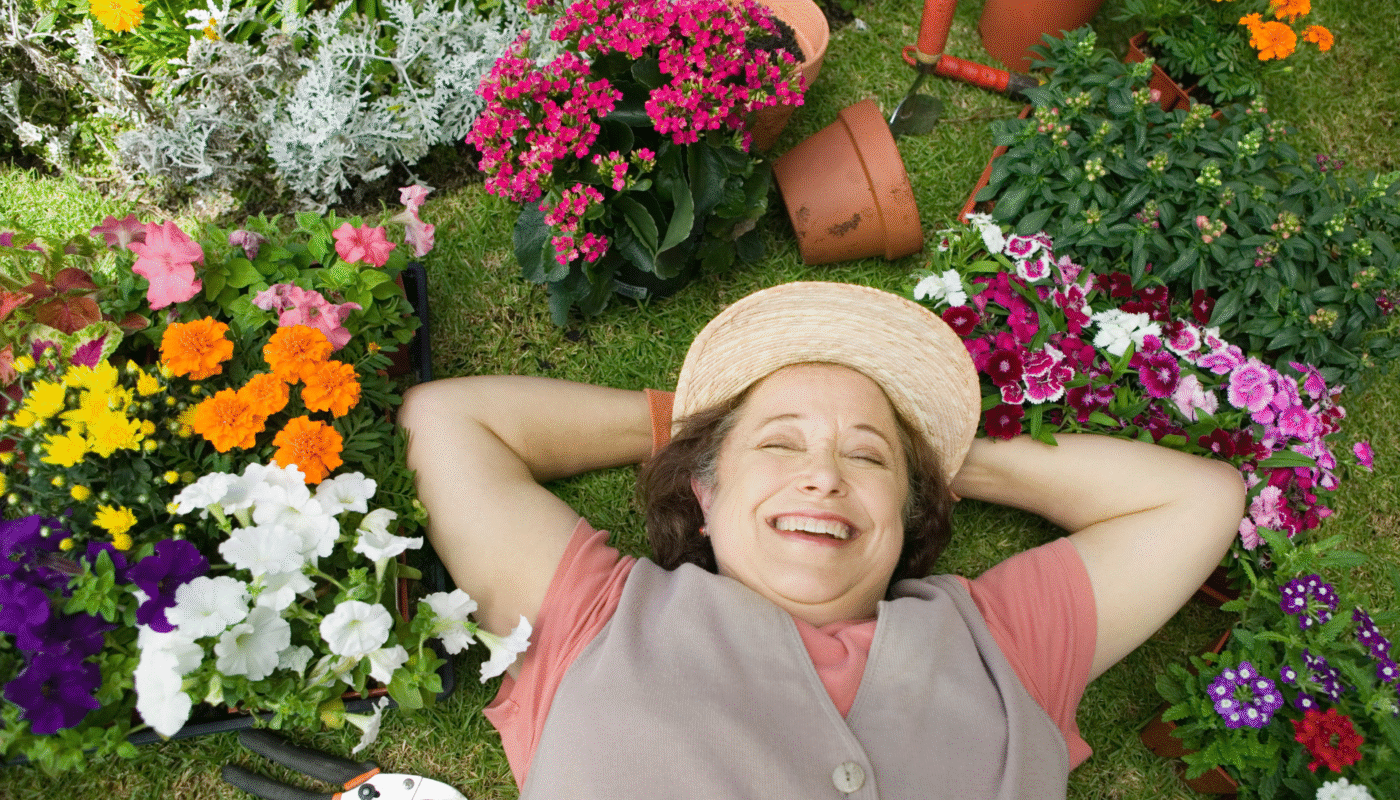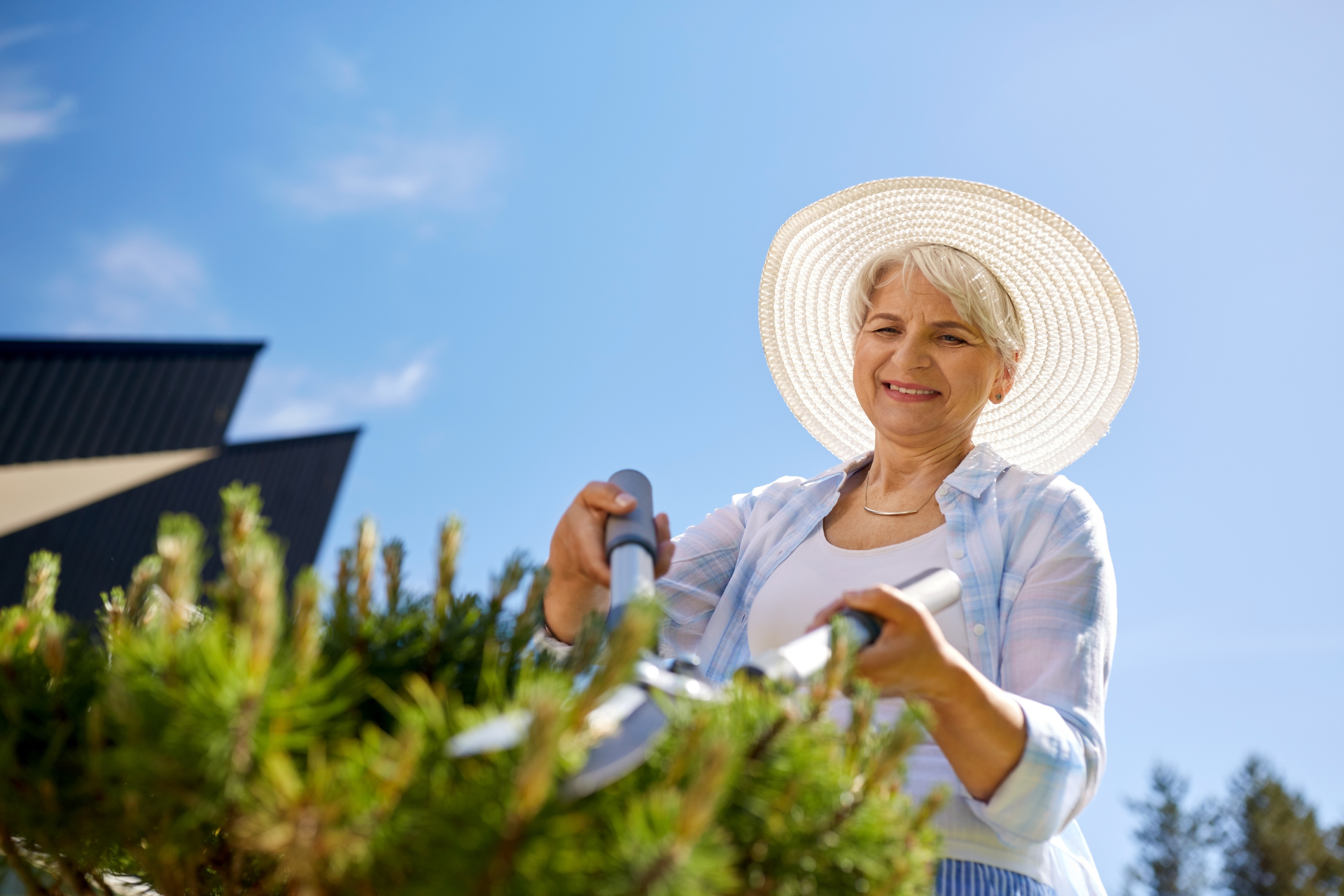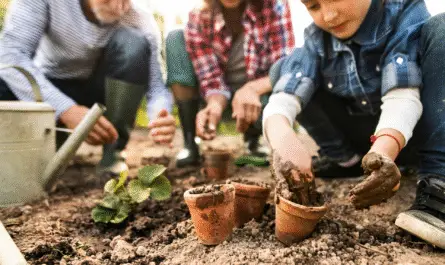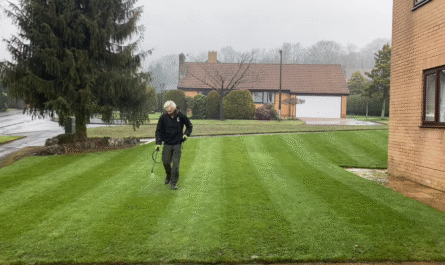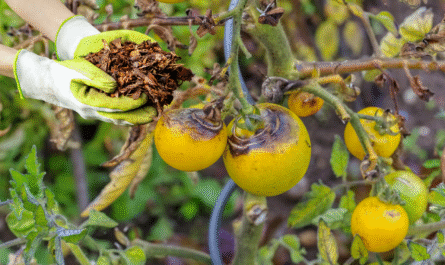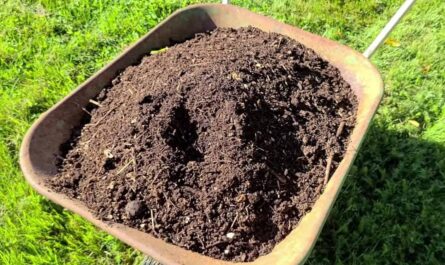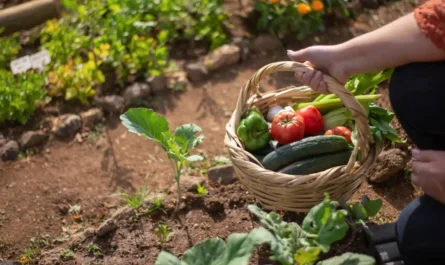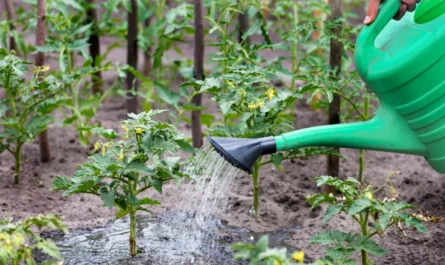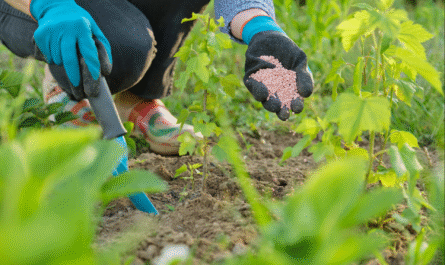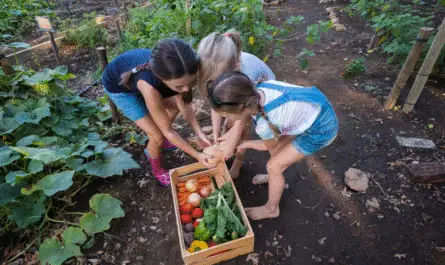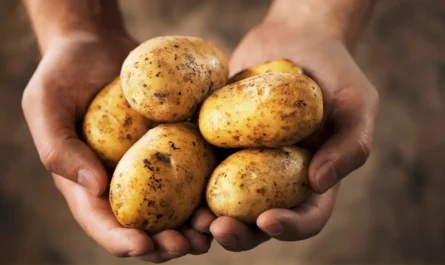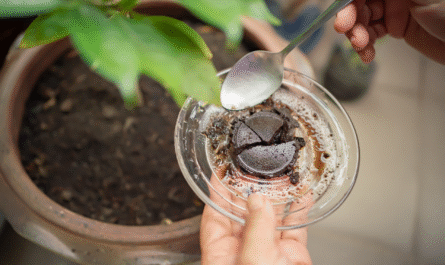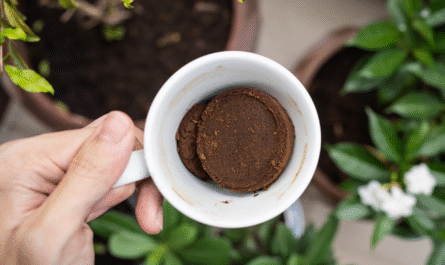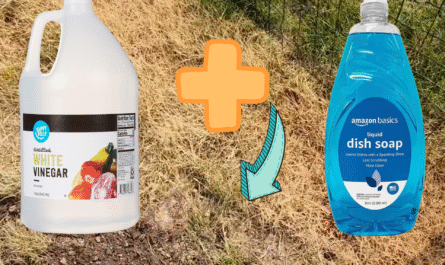I roll up my sleeves, push the dirt aside with my bare hands, and settle into a rhythm. Thirty minutes of gardening stretches into an immersive, physical meditative practice, but what does it actually do to my body, according to science?
Here’s the deep dive: how a seemingly simple daily habit affects muscles, heart, metabolism, mood, immune system, and even longevity.
What 30 Minutes of Gardening Does to Your Body
1. Boosts Physical Fitness & Strength
Gardening moves more than potted plants; it moves muscles I didn’t know I had. When I dig, lift, squat, and bend, I’m doing functional strength training. Research in the Journal of Physical Activity and Health shows that moderate gardening increases upper- and lower-body strength nearly as well as light gym workouts. Tasks like turning compost or carrying water become resistance exercises that build lean muscle tone.
It’s not just about muscle strength; it’s about mobility. As I kneel, twist, and stretch to reach flower beds, I’m engaging my core and promoting flexibility.
One 2017 study on older adults found regular gardening improved range-of-motion and joint function, reducing stiffness and boosting everyday mobility.
And here’s the kicker: gardening recruits slow-twitch and fast-twitch muscle fibers, which translates to better endurance and power. That multi-fiber engagement means I’m improving muscular endurance while avoiding the joint impact of treadmill running or heavy lifting. Thirty minutes in the garden delivers strength, flexibility, and balance, all in one.
2. Elevates Cardiovascular Health
While gardening might not feel like sprinting, my heart rate reliably climbs into the moderate-intensity zone. When I trim hedges or lug heavy soil, my cardiovascular system is in motion. Epidemiological studies link consistent moderate physical activity (like gardening for 30 minutes a day) to a 20–30% reduction in heart disease risk.
In a controlled intervention, adults who performed horticultural therapy, structured gardening, showed improved HDL (“good”) cholesterol levels and lower resting blood pressure after just six weeks. These biomarkers map directly onto long-term cardiovascular resilience.
Blood flow increases not only during activity but also adapts over time. My heart muscle strengthens; my blood vessels become more elastic; my arteries are less prone to plaque buildup. Over a lifetime, those 30-minute garden sessions stack up into meaningful heart protection.
Also Read: How to Harvest Spinach for a Continuous Supply of Leafy Greens
3. Enhances Metabolic Function & Weight Regulation
As I kneel, scoop, and haul, my body burns calories, about 150 to 300 in a half-hour, depending on intensity. That contributes directly to weight maintenance. But beyond caloric burn, gardening influences metabolic health in subtler ways.
Research in Environmental Health Perspectives found that soil bacteria like Mycobacterium vaccae, often introduced during gardening, can stimulate serotonin production, reducing cortisol and potentially mitigating stress-induced eating. It’s not just exercise; it’s microbiome-mediated metabolic regulation.
Additionally, repeated moderate activity improves insulin sensitivity. Studies in pre-diabetic adults show that daily light-to-moderate movement, such as gardening, can reduce HbA1c and fasting glucose levels over time. So while I’m tending plants, I’m helping my body regulate blood sugar efficiently.
4. Quietly Boosts Mental Well‑Being
Gardening doesn’t just grow gardens, it grows well-being. In a 2018 randomized trial, participants assigned to gardening duties saw significant drops in cortisol compared to reading indoors. I’ve felt it: the tension that unravels when soil touches skin, when plants respond to care.
Nature-based therapies like gardening are increasingly prescribed for anxiety and mild depression. Studies in PLOS One show that horticultural interventions reduce PHQ-9 depression scores comparably to traditional therapy, especially when practiced in groups. Even solo, I’m steering my nervous system toward parasympathetic dominance, lower heart rate, deeper breathing, and reduced fight-or-flight.
Plus, gardening enhances concentration. Research on Attention Restoration Theory suggests that tending to plants replenishes depleted mental resources faster than screen breaks. It’s the mental equivalent of a reset button, my focus returns sharper after 30 minutes among green leaves.
5. Strengthens Immunity & Gut Health
The microbes in my soil are microscopic allies. Contact with diverse earth bacteria, including M. vaccae, can activate regulatory T-cells and raise anti-inflammatory cytokines. A 2013 human trial showed gardening boosted the count of these immune cells, our body’s natural immunoregulators.
Meanwhile, soil exposure contributes to gut microbiome diversity. While direct ingestion is not the goal, incidental dirt on hands, when I resist the urge to over-sanitize, can seed beneficial microbes in my gut. A diversified gut microbiota is linked to lower chronic inflammation and fewer allergies.
In colder months, gardeners often have fewer colds. Some researchers suggest that early and repeated low-level exposure to microbes strengthens innate immunity. Thirty minutes in the garden can be a micro-dosing strategy for microbial conditioning.
6. Improves Posture, Balance & Joint Health
Geriatric research shows routine gardening reduces fall risk. For me, maintaining posture and balance isn’t theoretical: every kneel and reach engages stabilizers in my hips, ankles, and core. As I shift weight and pivot around plants, I train proprioception, my body’s internal GPS.
While gardening sometimes ranks as moderate joint loading, it’s generally low-impact. I’m not pounding pavement; I’m loading joints in functional and varied directions through squats, lunges, and side bends. Studies on older adults show that regular gardening can reduce arthritis symptoms and improve functional joint use.
These small, varied movements promote synovial fluid production—nature’s joint lubrication. Over time, I’m maintaining cartilage health, keeping joints resilient, and preserving mobility.
7. Provides Vitamin D & Hormonal Balance
Spending thirty minutes outdoors gives me sun, my body’s Vitamin D fodder. One meta-analysis indicated that regular gardening raised serum vitamin D levels by 15–25% in adults. That’s huge: adequate vitamin D regulates calcium, supports bone health, and contributes to immune strength.
Vitamin D also helps hormone regulation. Its receptors exist throughout the body, including brain tissue, modulating mood, testosterone, and cortisol. So those morning gardening sessions offer ASC (active sunlight correlation), lending hormonal balance to my day.
Of course, I’m mindful to protect skin, 30 minutes is generally safe for most skin types without sunscreen, but I tailor time to my pigmentation and UV index. When longer sessions are planned, I adjust with sun protection strategies.
8. Builds Social Connection & Sense of Purpose
Gardening can be personal, but it’s often shared. At community gardens or backyard get-togethers, my thirty minutes become part of the social glue. Studies show community gardening increases social capital, reduces loneliness, and elevates life satisfaction.
Even solo gardening builds psychological capital, purpose, competence, and autonomy. Every seed I plant or weed I remove feels like progress. That sense of mastery supports mental resilience and gives me measurable, daily meaning.
Scientifically, positive social and psychological states correlate with lower cortisol, better sleep, and improved cardiovascular metrics. Gardening is brain food and social fertilizer.
Final Thought
Thirty minutes of gardening isn’t just “outdoor recreation.” It’s a multi-system tune-up, rewiring muscles, metabolism, immunity, mood, and community. It combines light-to-moderate physical activity with microbiome exposure, environmental enrichment, and emotional resonance. And it does all that without hitting the gym. I call that a win.
Make gardening a consistent daily ritual, micro workouts with macro benefits. You’ll be stronger, calmer, healthier, and more connected. And if you ask me, every seed and every shovel load just adds to your life, inside and out.
FAQs
Aim for light-to-moderate intensity, enough to increase your breathing and heartbeat slightly, without gasping. If you can carry on a conversation but feel an elevated pulse, you’re in the ideal zone. Planting, weeding, carrying soil, pruning, all qualify if sustained for 30 minutes. Yes, soil microbes like Mycobacterium vaccae have immunomodulatory effects, promoting anti-inflammatory pathways. Occasional harmless exposure is beneficial. Just avoid working in contaminated soils (e.g., industrial areas) and wash produce before eating, simple hygiene complements, not undermines, the benefits. Gardening can contribute to weight maintenance and gradual fat loss, particularly when paired with mindful eating. While it's not as intense as HIIT or vigorous cardio, regular daily activity helps manage calories and improve metabolic health. Combine it with clean nutrition and you'll see steady results. Yes, with modifications. Raised beds, ergonomic tools, kneeling pads, and taking frequent breaks can make gardening accessible. Many research trials show that older adults with joint issues benefit from adaptive gardening, seeing improvements in pain reduction and functional ability. Start small and tailor tools to your comfort How hard should I be working in the garden for real benefit?
Does dirt really help my immune system? Could it make me sick?
Can gardening alone help me lose weight?
Is gardening safe for people with arthritis or mobility issues?

